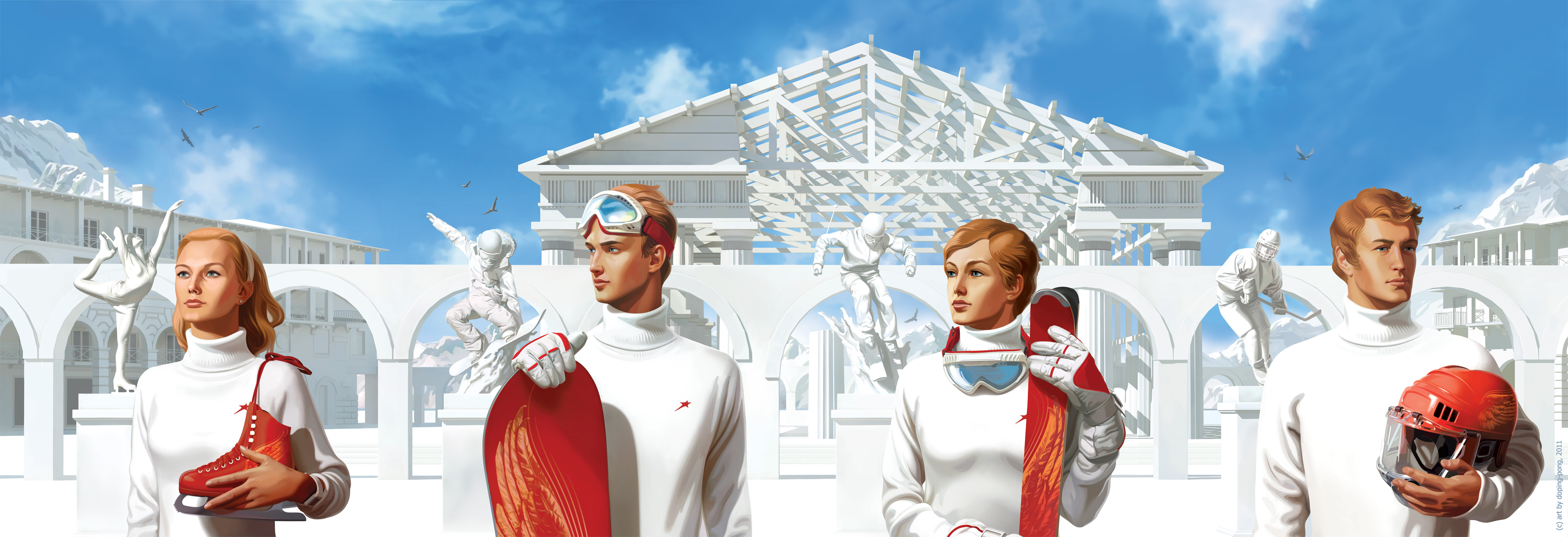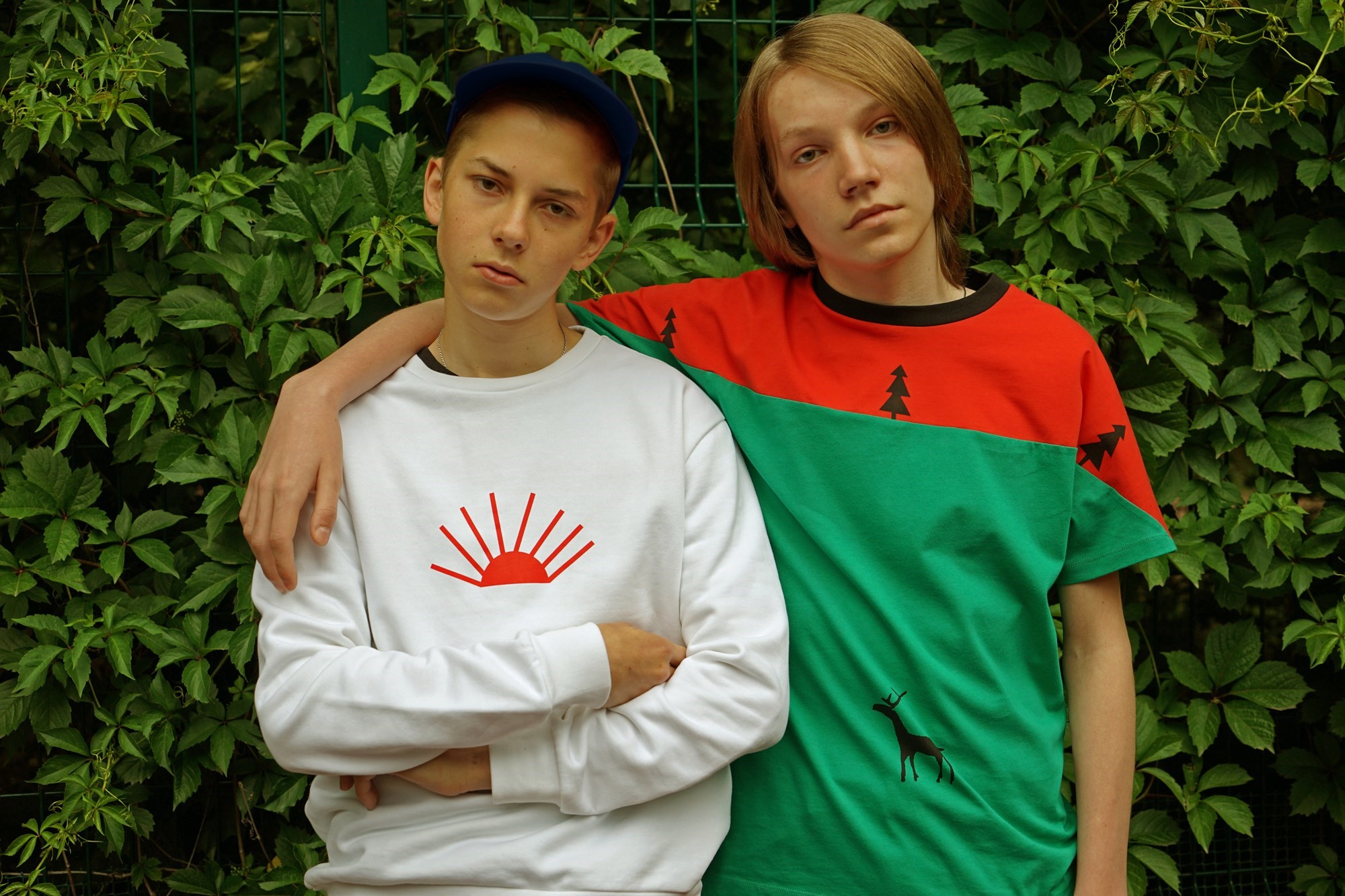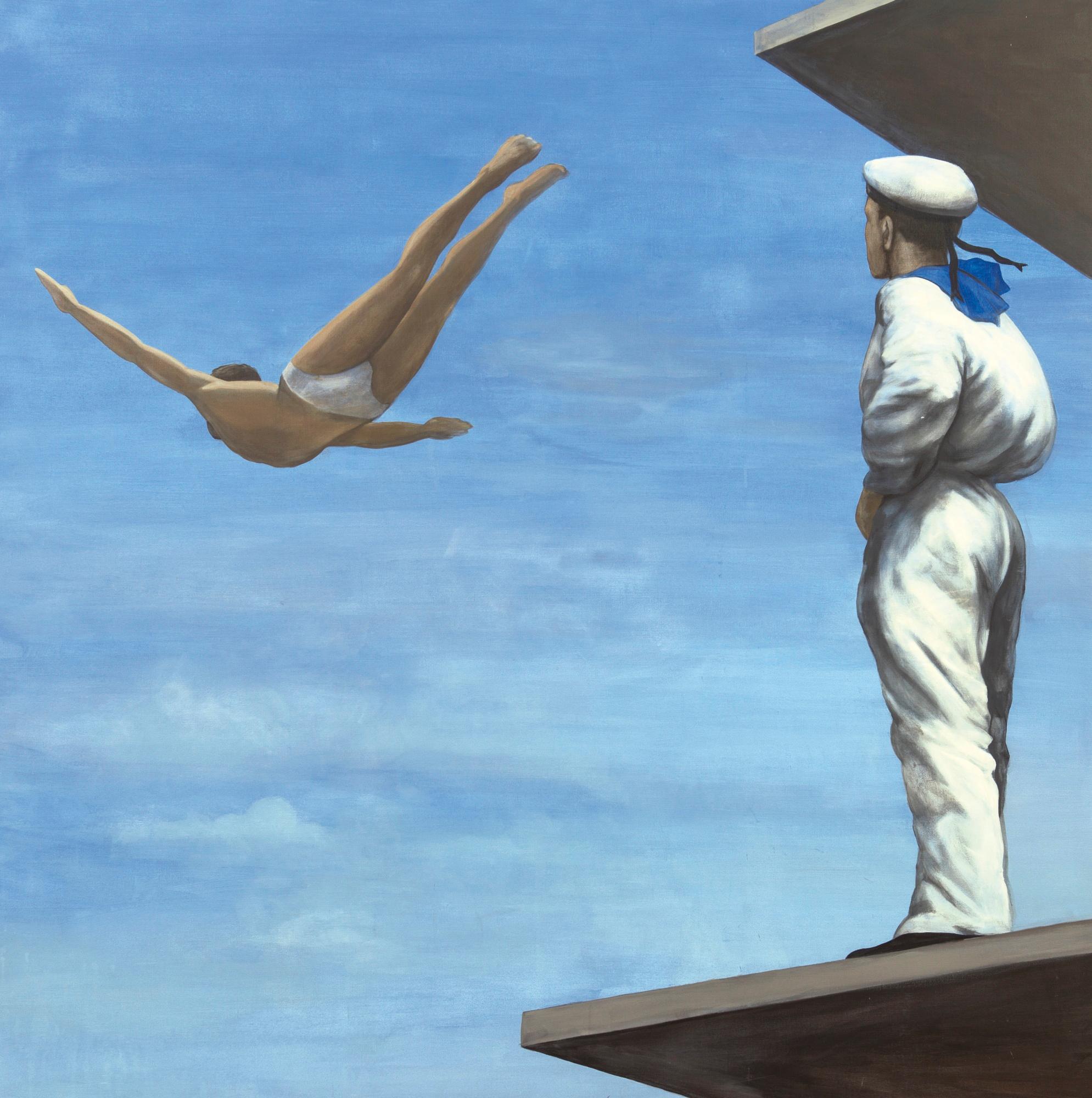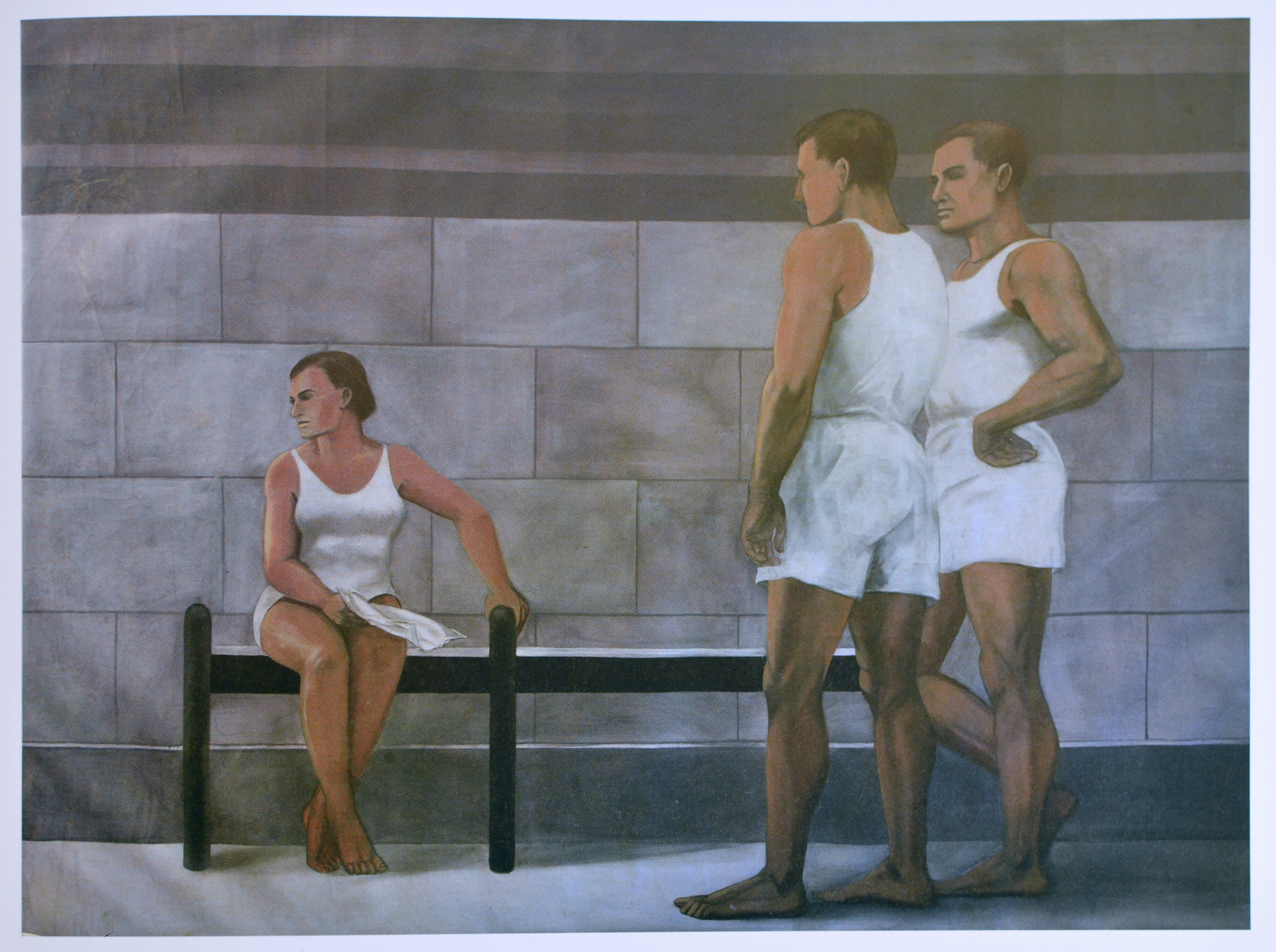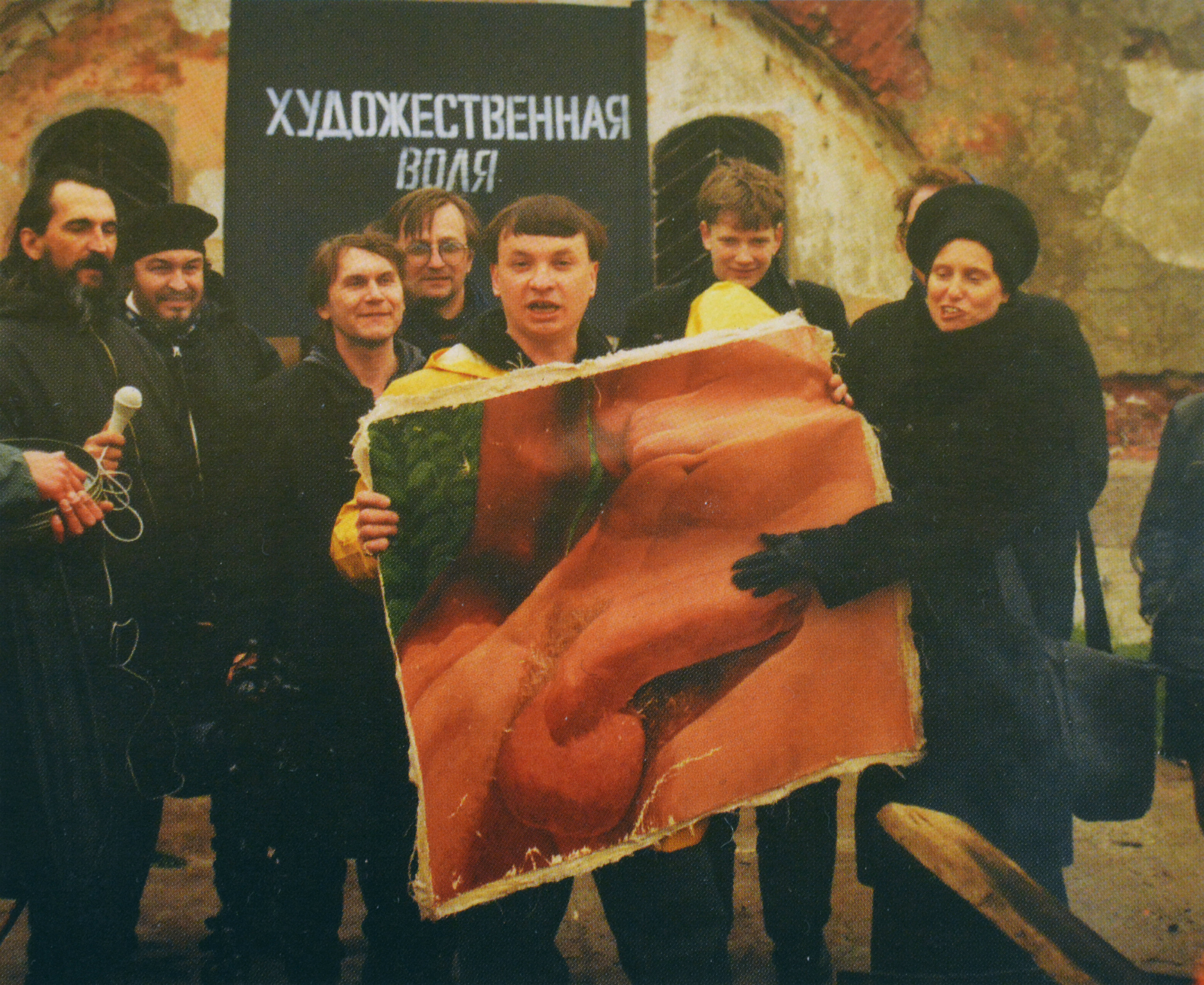Filed Under: Print > Visual arts > Novikov's "New Russian Classicism"
Novikov's "New Russian Classicism"
[5 items]
After rediscovering primitivism and the historical avant-gardes in the 1980s, with the fall of the Soviet Union Timur Novikov (1958-2002)—a charismatic leader of the Leningrad art and music scenes—started advocating for a return to the figurative, to classical standards of beauty, and to a traditional conception of art as craft. In contrast with Moscow Actionism and the hegemony of an international contemporary style, Novikov’s New Academy of Decorative Arts was an eclectic combination of dandyism, “life-creation,” and queer sensibility with discipline and tradition. Novikov’s neo-academism was deeply embedded in mass culture, including fashion, club and rock culture, film, photography, video art, and camp performance.
For Novikov, photography was the medium that allowed a cult of unmediated beauty to survive in the modern world: thus, the images “of beautiful men and women from Vogue” preserve the ancient “cult of Apollo.” The New Academy’s aesthetic ideals all belonged to popular (or populist) artforms like Western mass culture and totalitarian art—both Nazi art and Socialist Realism. Novikov’s stated goal was to bring physical beauty back from the sphere of mass culture into the museums and art academies. At the same time, neo-academism represented a form of “ethical and aesthetic ecology” against the decadence of both Western mass culture and the international language of modern art, and an attempt at creating national (i.e., specifically Russian and post-Soviet) art forms.
According to Novikov, Russia was the final preserve of European culture because of its specific geopolitical position. The dusty Soviet art academies had been training their artists in the traditional techniques of figurative art while their European counterparts had succumbed to abstraction. For seventy years, the Soviet Union had created a hermetically sealed space excluded from the flood of commercial advertising. In the case of Saint Petersburg, this situation had produced an aesthetically consistent environment dominated by imperial and neoclassical forms.
Novikov and other members of the New Academy had an important role in shaping pop culture and media in the late-Soviet and early post-Soviet periods—from the aesthetics of Viktor Tsoi and the Leningrad Rock Club, immortalized in movies like Assa (1987) and The Needle (1988), to clubbing culture, all the way to fashion and advertising. The long-lasting influence of Novikov’s queer nationalism on Russian popular culture today can be observed in a diverse range of fields, including fashion, advertising, and state propaganda. Examples of this influence include the collections of fashion designer Gosha Rubchinskiy (1984-), which reappropriate the aesthetics of gopniki (thugs) and neofascists and feature nostalgic allusions to the 1990s, including to Novikov himself. Another example is the infamous advertising campaign for the 2014 Winter Olympics in Sochi, which was realized by a group of designers close to the New Academy and came under fire for its not-so-veiled allusions to Nazi propaganda (see images above).
For Novikov, photography was the medium that allowed a cult of unmediated beauty to survive in the modern world: thus, the images “of beautiful men and women from Vogue” preserve the ancient “cult of Apollo.” The New Academy’s aesthetic ideals all belonged to popular (or populist) artforms like Western mass culture and totalitarian art—both Nazi art and Socialist Realism. Novikov’s stated goal was to bring physical beauty back from the sphere of mass culture into the museums and art academies. At the same time, neo-academism represented a form of “ethical and aesthetic ecology” against the decadence of both Western mass culture and the international language of modern art, and an attempt at creating national (i.e., specifically Russian and post-Soviet) art forms.
According to Novikov, Russia was the final preserve of European culture because of its specific geopolitical position. The dusty Soviet art academies had been training their artists in the traditional techniques of figurative art while their European counterparts had succumbed to abstraction. For seventy years, the Soviet Union had created a hermetically sealed space excluded from the flood of commercial advertising. In the case of Saint Petersburg, this situation had produced an aesthetically consistent environment dominated by imperial and neoclassical forms.
Novikov and other members of the New Academy had an important role in shaping pop culture and media in the late-Soviet and early post-Soviet periods—from the aesthetics of Viktor Tsoi and the Leningrad Rock Club, immortalized in movies like Assa (1987) and The Needle (1988), to clubbing culture, all the way to fashion and advertising. The long-lasting influence of Novikov’s queer nationalism on Russian popular culture today can be observed in a diverse range of fields, including fashion, advertising, and state propaganda. Examples of this influence include the collections of fashion designer Gosha Rubchinskiy (1984-), which reappropriate the aesthetics of gopniki (thugs) and neofascists and feature nostalgic allusions to the 1990s, including to Novikov himself. Another example is the infamous advertising campaign for the 2014 Winter Olympics in Sochi, which was realized by a group of designers close to the New Academy and came under fire for its not-so-veiled allusions to Nazi propaganda (see images above).
